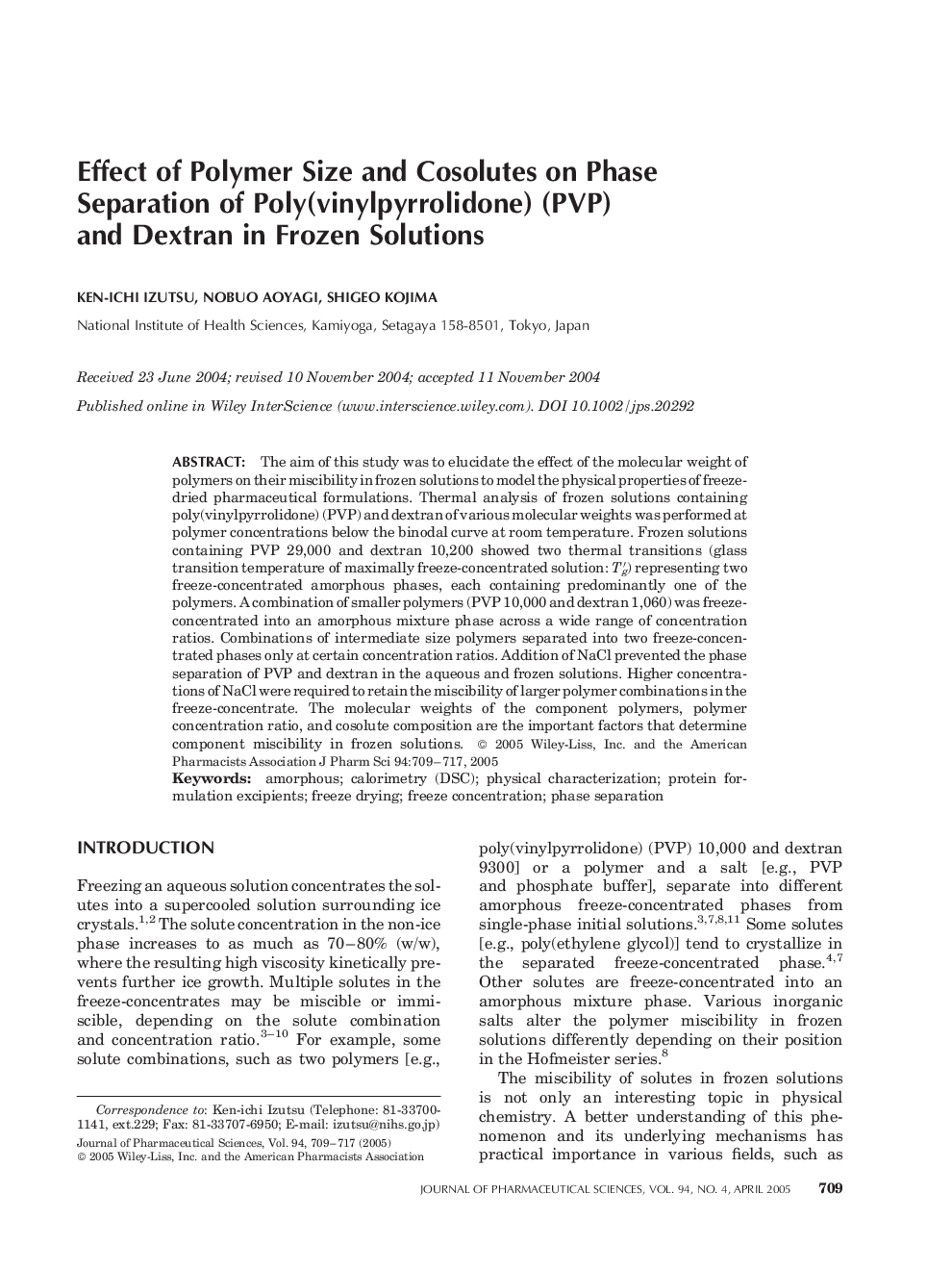| Article ID | Journal | Published Year | Pages | File Type |
|---|---|---|---|---|
| 8994947 | Journal of Pharmaceutical Sciences | 2005 | 9 Pages |
Abstract
The aim of this study was to elucidate the effect of the molecular weight of polymers on their miscibility in frozen solutions to model the physical properties of freeze-dried pharmaceutical formulations. Thermal analysis of frozen solutions containing poly(vinylpyrrolidone) (PVP) and dextran of various molecular weights was performed at polymer concentrations below the binodal curve at room temperature. Frozen solutions containing PVP 29,000 and dextran 10,200 showed two thermal transitions (glass transition temperature of maximally freeze-concentrated solution: Tgâ²) representing two freeze-concentrated amorphous phases, each containing predominantly one of the polymers. A combination of smaller polymers (PVP 10,000 and dextran 1,060) was freeze-concentrated into an amorphous mixture phase across a wide range of concentration ratios. Combinations of intermediate size polymers separated into two freeze-concentrated phases only at certain concentration ratios. Addition of NaCl prevented the phase separation of PVP and dextran in the aqueous and frozen solutions. Higher concentrations of NaCl were required to retain the miscibility of larger polymer combinations in the freeze-concentrate. The molecular weights of the component polymers, polymer concentration ratio, and cosolute composition are the important factors that determine component miscibility in frozen solutions.
Keywords
Related Topics
Health Sciences
Pharmacology, Toxicology and Pharmaceutical Science
Drug Discovery
Authors
Ken-ichi Izutsu, Nobuo Aoyagi, Shigeo Kojima,
